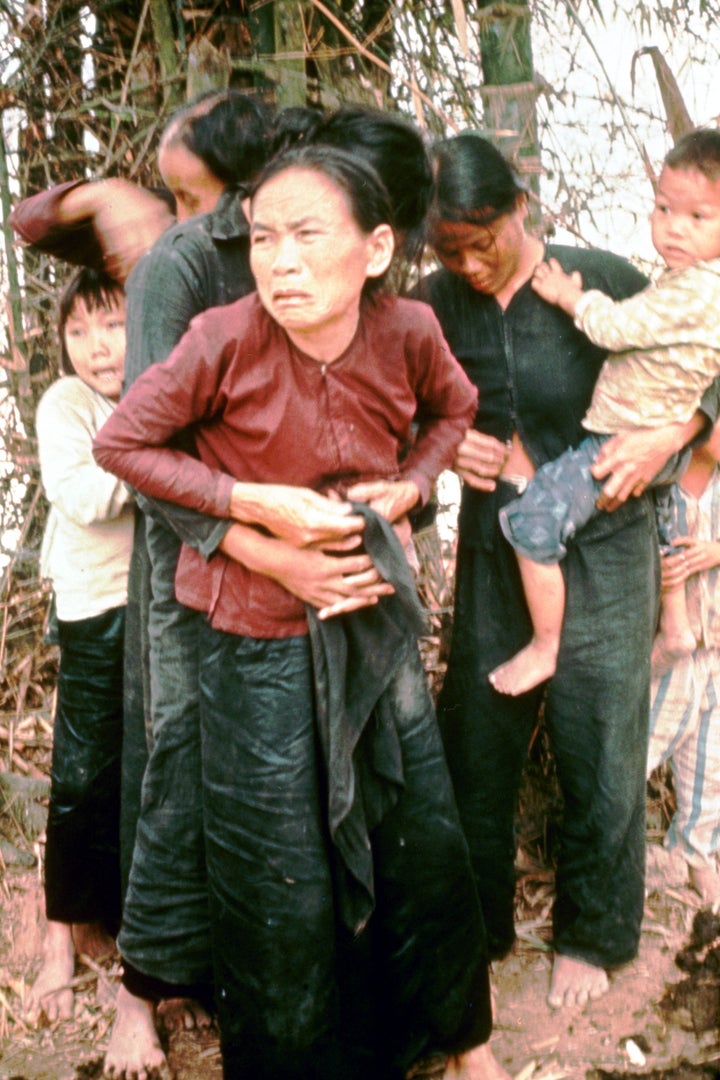Evelyn Theiss - The Photos That Caused Americans To Ask ‘What Are We Doing In Vietnam?’ The My Lai Massacre 50 years later
Photographs of My
Lai by Ron Haeberle
This story
originally appeared on FOTO
Ron Haeberle was a combat
photographer in Vietnam when he and the Army unit he was riding with - Charlie
Company, 1st Battalion, 20th Infantry Regiment - landed near the hamlet of My
Lai on the morning of March 16, 1968. Villagers weren’t alarmed; American GIs
had visited the region near the central Vietnamese coast before, without
incident. But within minutes, the troops opened fire. Over the course of the
next few hours, they killed old men, women, and children. They raped and
tortured. They razed the village. And when Haeberle’s shocking photographs of
their atrocities were published — more than a year later — the pictures laid
bare an appalling truth: American “boys” were as capable of unbridled savagery
as any soldiers, anywhere.
To mark the 50th
anniversary of the massacre, I spoke with Haeberle — in an exclusive interview,
at his home in Ohio — about that March morning; the routine Army operation that
devolved into a waking nightmare; and how his photos changed the course of the
war in Vietnam. I first met Ron
Haeberle in 2009 when I was a reporter at the Cleveland Plain Dealer — the
newspaper that, in November 1969, first published his My Lai photos. I was
assigned to write a story on the 40th anniversary of that landmark exposé, and
while much had previously been written about the Plain Dealer reporter who
wrote the article that ran alongside Haeberle’s photos — Joe Eszterhas, later
the screenwriter of “Basic Instinct” and other controversial films — I found
almost nothing about the man who took the grisly, iconic pictures at My Lai.
Was he still alive? Did he still live in Ohio?

RONALD L. HAEBERLE/THE LIFE IMAGES COLLECTION/GETTY IMAGES
I found a name,
address, and phone number, but wasn’t sure if it was the Ron Haeberle.
Knowing that a reticent Haeberle might hang up if I called, I drove to the
address, knocked on the door, and introduced myself. It was Ron, all right, and
he graciously asked me in. I stayed at his house for two hours, as he told me
about My Lai and his own life since 1968. It was his first major interview
since the story broke four decades earlier. (He gave the BBC a couple of quotes
in 1989, he said, and that was the extent of his contact with the press.)
Recently, FOTO asked
me to approach Haeberle and ask if he would revisit the story for the 50th
anniversary of the massacre. He agreed, and he and I returned to one of the
darkest chapters in American history, and his role in bringing it to light. Ron Haeberle was
drafted in 1966, after attending Ohio University, where he was a photographer
for the school paper. He ended up in Hawaii with the Army’s Public Information
Office. By the end of 1967, it was beginning to look like his “tour” would end
there - a disappointing prospect.
“As a photographer, I wanted to see what was
happening in Vietnam for myself,” he told me. He requested a transfer, and was
sent to Vietnam. At 26 years old, he was older than most members of Charlie
Company, where the average age was just 20. Charlie Company had
been together for about a year before Haeberle joined it in March 1968. The
unit had been in no firefights, but had lost men to booby traps and land mines.
When they landed at My Lai, they were primed for action; Viet Cong troops were
reported to be hiding in the hamlet. That information was wrong. But in the
end, it didn’t matter: My Lai was doomed. Within four hours of Charlie
Company’s arrival, the village’s huts were burned to the ground and hundreds of
civilians were dead. (The exact number of those murdered is disputed to this
day, with the official American estimate running to around 350; the Vietnamese
say more than 500 were killed.).. read more:
